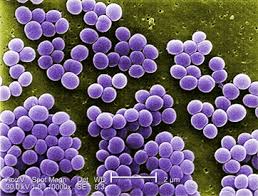
The nature.com announces a discovery of new antibody which can ‘eliminate’ the “intracellular S.aureus”.
S.aureus, or otherwise known as Staphylococcus aureus is regarded as an “extracellular pathogen”. If the said bacterium finds a shelter in “host cells” then they can become “relatively protected from antibiotics” guarded by their cellulous “reservoir”.
S.aureus is a “gram-positive coccal bacterium” that comes from the phylum of Firmicutes. They are often located in the human “respiratory tract” and on the skin membrane where perspiration settles down.
Generally, the said bacterium causes “nitrate reduction”; some believe that it not “always pathogenic”. Commonly, it leads to various skin infections like “abscesses”, “respiratory infections” like “sinusitis, and food poisoning”. Moreover:
“The emergence of antibiotic-resistant forms of S. aureus such as MRSA is a worldwide problem in clinical medicine”.
The antibiotic resistant S. aureus enables “long-term colonization of the host” and leads to “clinical failures” which results in “relapses” after an “antibiotic therapy”.
Nevertheless, nature.com announces that:
“...intracellular reservoirs of S. aureus in mice comprise a virulent subset of bacteria that can establish infection even in the presence of vancomycin, and we introduce a novel therapeutic that effectively kills intracellular S. aureus”.
The therapy consists of an “antibody–antibiotic conjugate” wherein the antibody of an “anti-S. aureus” is “conjugated” to an antibiotic which is “highly efficacious” and gets activated once it gets “released in the proteolytic environment of the phagolysosome”.
Informing further about the conjugate of antidoby-antibiotic, nature.com writes:
“The antibody–antibiotic conjugate is superior to vancomycin for treatment of bacteraemia and provides direct evidence that intracellular S. aureus represents an important component of invasive infections”.
References:
www.nature.com
S.aureus, or otherwise known as Staphylococcus aureus is regarded as an “extracellular pathogen”. If the said bacterium finds a shelter in “host cells” then they can become “relatively protected from antibiotics” guarded by their cellulous “reservoir”.
S.aureus is a “gram-positive coccal bacterium” that comes from the phylum of Firmicutes. They are often located in the human “respiratory tract” and on the skin membrane where perspiration settles down.
Generally, the said bacterium causes “nitrate reduction”; some believe that it not “always pathogenic”. Commonly, it leads to various skin infections like “abscesses”, “respiratory infections” like “sinusitis, and food poisoning”. Moreover:
“The emergence of antibiotic-resistant forms of S. aureus such as MRSA is a worldwide problem in clinical medicine”.
The antibiotic resistant S. aureus enables “long-term colonization of the host” and leads to “clinical failures” which results in “relapses” after an “antibiotic therapy”.
Nevertheless, nature.com announces that:
“...intracellular reservoirs of S. aureus in mice comprise a virulent subset of bacteria that can establish infection even in the presence of vancomycin, and we introduce a novel therapeutic that effectively kills intracellular S. aureus”.
The therapy consists of an “antibody–antibiotic conjugate” wherein the antibody of an “anti-S. aureus” is “conjugated” to an antibiotic which is “highly efficacious” and gets activated once it gets “released in the proteolytic environment of the phagolysosome”.
Informing further about the conjugate of antidoby-antibiotic, nature.com writes:
“The antibody–antibiotic conjugate is superior to vancomycin for treatment of bacteraemia and provides direct evidence that intracellular S. aureus represents an important component of invasive infections”.
References:
www.nature.com





